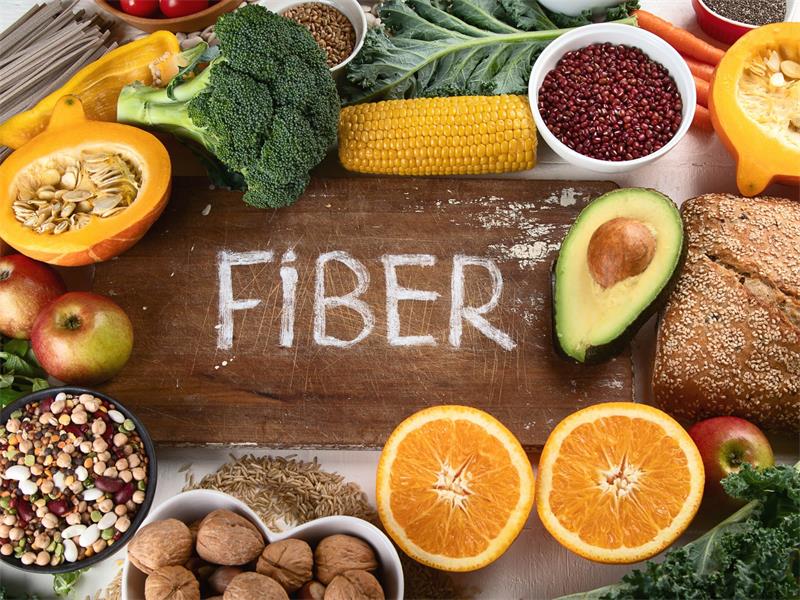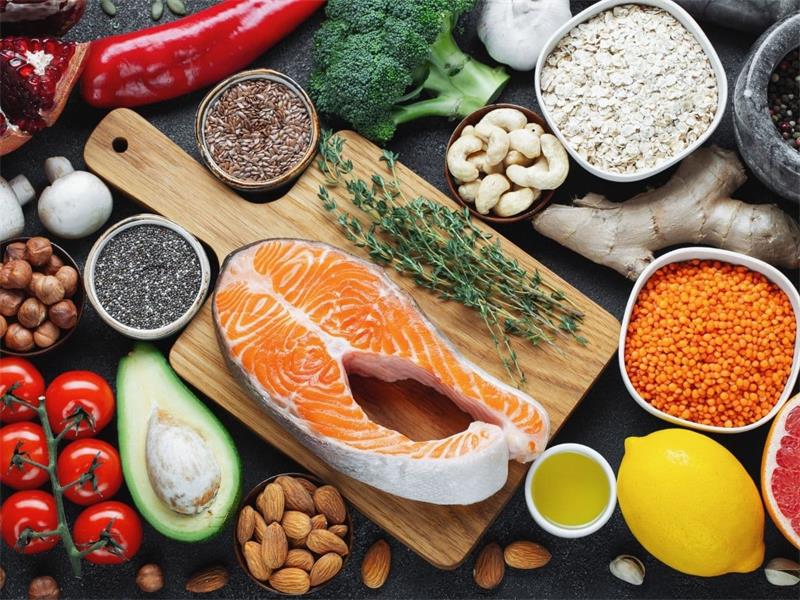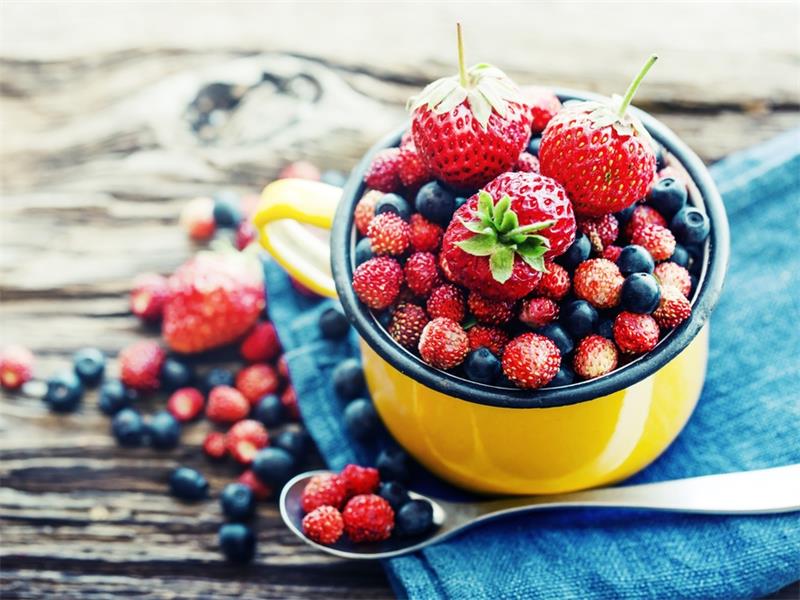Contents
What Are Superfoods and Why Are They Important?
Superfoods are a buzzword in the health and wellness world, but what exactly are they? Simply put, superfoods are foods that are packed with nutrients and offer numerous health benefits beyond basic nutrition. They’re known to improve overall health, boost energy levels, and even help prevent chronic diseases like heart disease and diabetes.
Incorporating superfoods into your diet is an easy way to improve your overall health without drastically changing your eating habits. Superfoods can be easily added to meals or enjoyed as healthy snacks throughout the day.
So why not give them a try? There’s no one-size-fits-all definition for what makes a food a superfood, but generally speaking, they’re nutrient-dense whole foods that are high in antioxidants, vitamins, minerals, fiber or other beneficial compounds.
The great thing about superfoods is that they’re accessible to everyone! You don’t have to spend a lot of money on exotic or hard-to-find ingredients; many superfoods can be found at your local grocery store or farmer’s market.
Leafy Greens
The Ultimate Superfood: Leafy Greens
When it comes to superfoods, leafy greens are at the top of the list. Greens such as kale, spinach, collard greens, and Swiss chard are jam-packed with essential vitamins and minerals.
For instance, kale is rich in vitamin C, K, and A while spinach is an excellent source of iron and magnesium. The benefits of leafy greens go far beyond their nutritional value.
Benefits of Leafy Greens
One benefit of consuming leafy greens is that they are low in calories yet high in fiber. This means they can help you feel full quickly while also aiding in digestion.
Furthermore, studies have shown that eating more leafy greens can reduce your risk of heart disease thanks to their abundance of antioxidants that can help combat inflammation. Another great thing about these veggies is that they are incredibly versatile when it comes to preparation.
You can toss them into a salad or sauté them with garlic for a quick side dish. If you’re feeling adventurous, try blending them into a smoothie or even baking them into chips!
Ways to Incorporate Leafy Greens into Your Diet
There are countless ways to sneak more leafy greens into your diet without sacrificing taste or variety. Start by swapping out iceberg lettuce for spinach or kale in your salads for a boost of nutrients and flavor.
You could also add some chopped collard greens to your grain bowls or stir-fries for some added crunch. If you’re not a big fan of the taste of leafy greens on their own, try adding them to smoothies with fruits like bananas or mangoes for some sweetness.
Another popular method for incorporating these veggies is by making green juices that combine veggies like kale and celery with sweet fruits such as apples. There’s no denying the power of leafy greens when it comes to overall health and wellness.
From reducing the risk of disease to aiding in digestion, these veggies are a must-have in any healthy diet. So get creative and find new ways to add them to your meals!
The Power of Berries
Berries come in all different shapes and sizes and can be an incredibly healthy addition to your diet. These vibrant fruits are known for their rich antioxidant content that can help protect against inflammation, improve heart health, and even reduce the risk of cancer. Here are a few different types of berries you should consider adding to your meals.
Blueberries
Blueberries are a popular superfood that is packed full of nutrients. They contain high levels of vitamin C, vitamin K, fiber, and antioxidants like anthocyanins that have been linked to improved cognitive function. Blueberries are also known for their anti-inflammatory properties which make them effective at reducing the risk of chronic diseases.
Strawberries
Strawberries are another type of berry that is low in calories but high in nutrients. They contain high levels of vitamin C and fiber but what sets them apart from other berries is that they also contain folate. Folate is essential for maintaining heart health as it helps to lower homocysteine levels which can increase the risk of heart disease.
Raspberries
Raspberries are a delicious fruit that contains powerful antioxidants like ellagic acid which have been linked to cancer prevention. They also contain high levels of manganese, vitamin C, and fiber which promotes good digestion and helps regulate blood sugar levels.
Adding Berries to Your Meals
Berries can be enjoyed in many ways throughout the day from adding them to smoothies or oatmeal bowls or using them as a topping on salads or desserts. They can even be eaten on their own as a snack throughout the day. For breakfast, try adding some sliced strawberries or blueberries into your yogurt bowl or sprinkle some raspberries over your morning oatmeal.
For lunchtime salads, try adding sliced strawberries or blueberries for a burst of sweetness or even some dried cranberries for a bit of crunch. For dessert, try making a mixed berry crumble or topping your ice cream with fresh raspberries.
Berries can be used in a variety of ways that can help add flavor, nutrients and color to any meal. So, go ahead and experiment with these delicious fruits to find the perfect dishes for you!
Nuts and Seeds: Your Superfood Powerhouses
When it comes to superfoods, nuts and seeds are some of the best sources of healthy fats, protein, vitamins, and minerals. Almonds, chia seeds, and flaxseeds are particularly rich in nutrients that promote good health and help protect against chronic diseases.
Almonds: The All-Rounders
Almonds are one of the most versatile nuts around. They can be eaten raw or roasted, sweet or savory.
A handful of almonds every day can provide you with a range of nutrients such as protein, healthy fats, fiber, vitamin E and magnesium which help reduce inflammation in the body. You can add almonds to your diet by throwing some into your breakfast smoothie or oatmeal; as a topping on salads; or even blended into almond milk for a dairy-free alternative.
Chia Seeds: Tiny but Mighty
Chia seeds have been gaining popularity for their nutritional value. They’re rich in omega-3 fatty acids (which promote heart health), fiber (which aids digestion) and minerals like calcium which help keep bones strong. To incorporate chia seeds into your diet try making chia seed pudding by mixing them with milk or yogurt; sprinkling them over your morning cereal; or even adding them to homemade granola bars for an added crunch.
Flaxseeds: A Great Source of Omega-3s
In addition to containing omega-3 fatty acids similar to those found in fish oil supplements, flaxseed is also rich in lignans which may have benefits against cancer risk factors among others. Flaxseeds are easy to add to meals whether taken whole or ground up into a fine powder that you can sprinkle over your food.
You can add a tablespoon of ground flaxseeds to your morning smoothie or oatmeal; mix them into muffin batter or even use them as an egg substitute in vegan baking. By incorporating these nuts and seeds into your daily diet, you get all the essential nutrients that your body needs to function optimally and help ward off potential health issues.
Whole Grains
Examples of whole grains like quinoa, brown rice, and oats
It’s no secret that carbs have gotten a bad rap in recent years. But not all carbs are created equal, and whole grains are an essential part of a healthy diet.
Some examples of whole grains include quinoa, brown rice, and oats. Quinoa is a seed that’s often used as a grain.
It’s high in protein and packed with essential nutrients like iron and magnesium. Brown rice is another great option that’s rich in fiber and antioxidants.
And don’t forget about oats – they’re not just for breakfast! Oats are also high in fiber and can help to lower cholesterol levels.
Health benefits of incorporating whole grains into your diet
Incorporating whole grains into your diet has numerous health benefits. For starters, they’re packed with nutrients like fiber, B vitamins, iron, magnesium, and more. Whole grains can help to reduce the risk of heart disease, stroke, type 2 diabetes, and some forms of cancer.
The fiber found in whole grains can also help to keep you feeling full for longer periods of time – making them great for weight management. And because they’re digested more slowly than refined grains (like white bread or pasta), consuming whole grains can help to regulate blood sugar levels.
So if you’ve been avoiding carbs altogether or sticking solely to refined options like white bread or pasta – it’s time to switch things up! Try incorporating quinoa into your salads or soups; make brown rice instead of white; or stir some rolled oats into your next batch of muffins or pancakes for a delicious (and nutritious!) twist on a classic recipe.
The Power of Fermented Foods for Your Gut Health
Fermented foods are becoming increasingly popular in health circles and for good reason. These foods, like kimchi, sauerkraut, and kefir, are packed with probiotics that can support a healthy gut microbiome.
In fact, fermented foods have been consumed for thousands of years due to their health benefits. Here’s what you need to know about these superfoods:
What Are Fermented Foods?
Fermented foods are made by allowing beneficial bacteria to grow and thrive in the food. This process creates lactic acid, which gives fermented foods their tangy flavor while also working as a natural preservative. Some popular examples include kimchi – a spicy Korean dish made from fermented cabbage – sauerkraut – another type of fermented cabbage commonly found in German cuisine – and kefir – a fermented milk drink that originated in the Caucasus Mountains.
The Benefits of Eating Fermented Foods
Eating these superfoods has been linked to numerous health benefits. For one, they can improve digestion and nutrient absorption by increasing the amount of beneficial bacteria in your gut. This is important because your gut is responsible for digesting food and absorbing nutrients that keep your body healthy.
Additionally, research has found that regularly consuming fermented foods may help relieve some digestive issues like bloating or constipation while also supporting your immune system by balancing gut bacteria. Overall, integrating more fermented foods into your diet can be an easy way to promote better digestive health while enjoying rich flavors and cultural variety at the same time!
Dark Chocolate
The Health Benefits of Dark Chocolate
Who said that chocolate is bad for you? In fact, dark chocolate is one of the most nutritious foods out there, loaded with health benefits that are sure to surprise you. The cocoa in dark chocolate contains flavonoids and antioxidants which help to reduce inflammation and improve heart health.
Additionally, studies have shown that eating dark chocolate can boost brain function, enhance skin health, and even improve your mood. One reason why dark chocolate is so beneficial is because it contains a high percentage of cocoa solids.
Generally speaking, the higher the percentage of cocoa solids your chocolate has, the more flavonoids it will contain. So if you’re looking for maximum health benefits from your chocolate fix, go for bars that have at least 70% cocoa content.
Tips for Choosing the Right Type
Now that we’ve established just how healthy dark chocolate can be for you let’s talk about how to choose the right type. First and foremost: read the labels! Not all chocolates are created equal – many contain added sugar or milk products which can dilute their nutritional value.
Look for brands or bars that are labeled as “cacao” or “pure” as they tend to be less processed and contain fewer additives. Another thing to keep in mind when selecting chocolates is their country of origin.
Different countries produce different types of cocoa beans with varying levels of flavor notes and intensity. For example: The beans grown in Ecuador generally have fruity notes while those grown in Madagascar tend to have a more acidic taste profile.
Don’t be afraid to experiment with different brands and flavors until you find one that suits your palate best! With so many options out there, there’s bound to be a perfect match for everyone’s taste buds.
Conclusion
Overall, incorporating superfoods into your diet is a great way to improve your overall health and wellness. By adding leafy greens like kale and spinach, you can benefit from their high amounts of vitamins and minerals, as well as their ability to reduce inflammation in the body.
Berries offer powerful antioxidants that can help protect against disease, while nuts and seeds provide essential omega-3 fatty acids and protein. Whole grains like quinoa and brown rice are great sources of fiber to keep you feeling full for longer periods of time, while fermented foods like kimchi and sauerkraut can promote gut health by providing beneficial probiotics.
And let’s not forget about the benefits of dark chocolate – besides tasting delicious, it contains antioxidants that can lower blood pressure and reduce heart disease risk. It’s important to note that eating a variety of these superfoods is key to getting the most benefits.
Don’t be afraid to mix it up and try new things – who knows, you may discover a new favorite food! Remember, small changes in your diet can add up over time.
Incorporating these top superfoods will not only make you feel good physically but mentally as well. So give your body the love it deserves by adding some superfoods into your daily routine!













